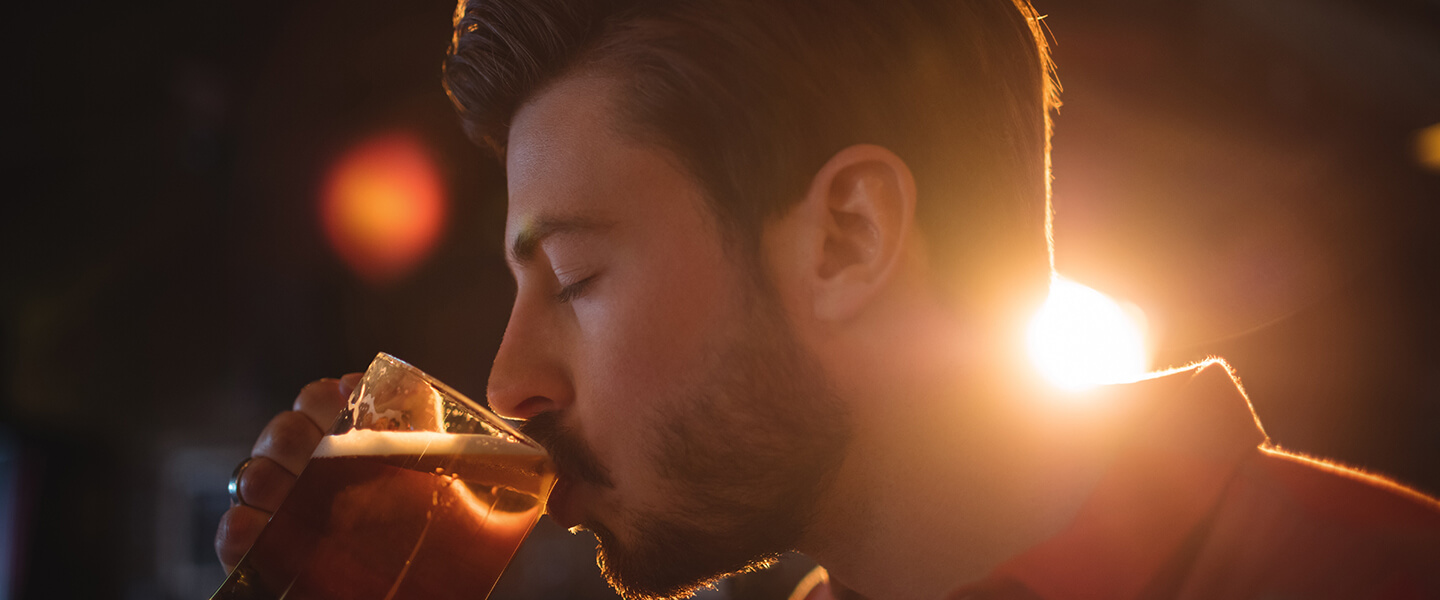Activity in Newly Discovered Brain Circuit Predicted Future Compulsive Drinking in Mice
Activity in Newly Discovered Brain Circuit Predicted Future Compulsive Drinking in Mice

While nearly every adult has an alcoholic drink at some point, only some develop an alcohol use disorder.
Can we measure the differences between adults who do and do not drink compulsively? What factors are involved when an individual transitions from an initial exposure to alcohol to dependence upon it? These are some of the questions that have driven research led by BBRF Scientific Council member, 2016 Freedman Prizewinner, and 2013 BBRF Young Investigator Kay M. Tye, Ph.D., of the Salk Institute for Biological Sciences.
Dr. Tye and colleagues, including first author Cody Siciliano, Ph.D., a 2017 BBRF Young Investigator, recently published a paper in the journal Science describing their discovery of a circuit in the mouse brain whose functioning, they say, appears to provide a mechanistic explanation for compulsive alcohol drinking. Because of the deep structural and functional similarities of the mouse and human brains, the results could have relevance in the study of alcohol use disorder in people.
Dr. Tye’s team detected a distinctive pattern in the activity of the newly discovered circuit that occurred in mice that went on to become compulsive drinkers. This pattern was not present in mice that did not become compulsive drinkers.
Many factors can affect whether an initial exposure to alcohol leads to compulsive drinking—which entails continued drinking despite experiencing, and being aware of, negative consequences.
Dr. Tye’s team wanted to move a step beyond existing studies that have examined the brain after a drinking disorder has begun. In searching for factors in the brain that might predispose an individual to compulsive drinking, they designed a behavioral task that would enable them to follow a group of mouse-subjects over a period of months, before exposure to alcohol, at the time of early exposures, and over time as the mice were made to experience various punishments that attended their continued imbibing. One such “disincentive” was the addition of quinine, a harsh-tasting substance, to their alcohol supply, as well as the pairing of mild but annoying foot-shocks with alcohol consumption.
The mice sorted themselves into three distinct groups. One (“low drinkers”) had little appetite for alcohol, even when made available, and did not binge; a second (“high drinkers”) had a desire to consume alcohol to the point of binging, but was to some degree sensitive to punishments; a third (“compulsive drinkers”) binged, and continued to drink regardless of negative consequences.
After running this part of the experiment, the team was able to “predict” (in retrospect) which of the animals would go on to become compulsive, based on neural circuit activity that occurred the very first time they drank alcohol.
The circuit the team discovered connects neurons in part of the prefrontal cortex with those in a brainstem region called the PAG (periaqueductal gray matter). The discovery is consistent with the team’s hypothesis that problems in prefrontal cortex circuits involved in “top-down” control of avoidance behavior may underlie susceptibility to developing compulsive drinking behaviors. The PAG is known to be involved in responding to adverse events. Signaling from the prefrontal cortex to the PAG was reduced in mice that became compulsive alcohol drinkers.
The team suggests that disruptions in the functioning of the circuit could underlie problems in processing aversive cues, resulting in compulsive drinking behavior. Dr. Tye and colleagues were able to image the circuit’s operation in living mice engaged in drinking behaviors. They were also able to use a technology called optogenetics (developed by BBRF Scientific Council member and 2005 Young Investigator Karl Deisseroth, M.D., Ph.D.) to control operation of the circuit with beams of colored laser light. This manipulation enabled them to alternately increase and reduce compulsive alcohol intake in mice.
“We don’t yet know if this circuit is specific to alcohol or if it’s also involved in multiple different compulsive behaviors—such as those related to other substances of abuse or natural rewards,” Dr. Tye says. That will be investigated in future research, which will also search for components of the circuit that might be potential targets for future therapies.
If you enjoyed this article, please read:




